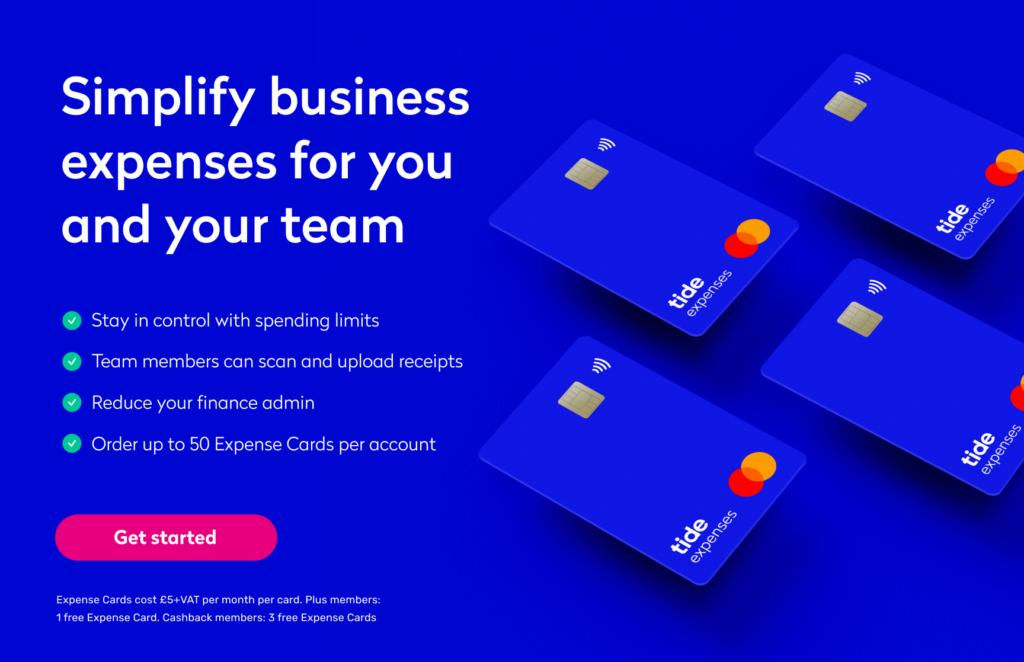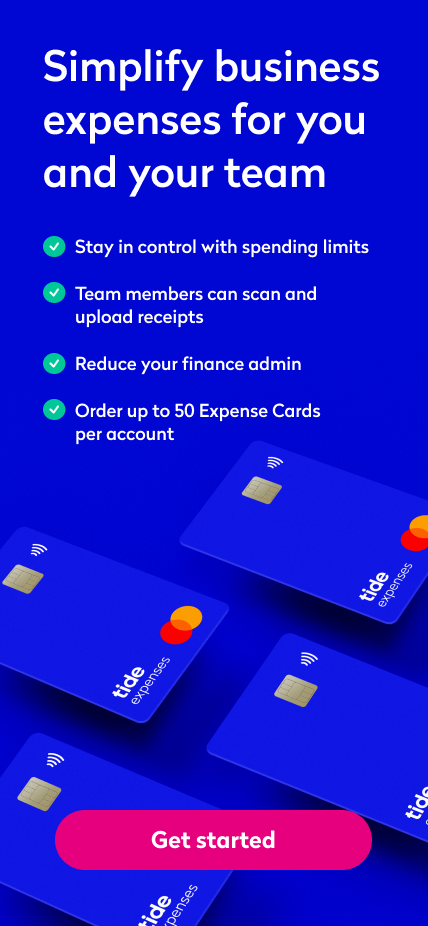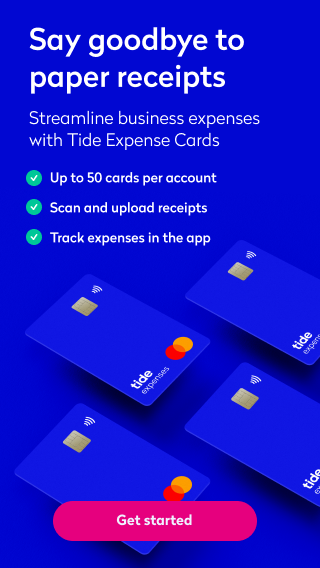
HMRC Mileage Rates in the UK

Tracking and claiming business expenses lets your small business keep more of its income and helps employees keep more of their pay. These expenses are costs your company incurs to generate revenue, including business-related travel.
When employees make trips solely for work purposes, they are eligible for tax relief on their journeys. You can offer tax relief to employees who use their own vehicles through HMRC mileage rates. They’ll also have options for claiming payment for some of the costs associated with company cars.
Offering mileage payments takes substantial financial admin and record-keeping on your part. You’ll need to claim business travel, track data and pay employees throughout the year. But with the right approach, you can streamline the process and help reduce tax bills for you and your employees.
In this article, we’ll talk about what the HMRC mileage allowance is and how your employees can benefit. We’ll also discuss the ins and outs of the HMRC fuel allowance used for company cars.
Top Tip: Understanding how to manage business expenses helps you save money, pay taxes correctly and improve your business’s financial health. Learn what expenses are, which you can claim and how to claim them in our guide on what expenses are and how small businesses can manage them 📣
Table of contents
- What is the HMRC mileage rate?
- How HMRC calculates mileage rates
- HMRC mileage rates for 2022
- How to reimburse employees
- How and when to report mileage to HMRC
- HMRC advisory fuel rates
- How HMRC calculates advisory fuel rates
- Start claiming your business-travel expenses
What is the HMRC mileage rate?
The HMRC mileage rate is a scheme that lets employees claim expenses when they use their own vehicles for work purposes. The idea is to help cover the costs associated with petrol used, but also wear and tear to the vehicle, insurance costs and road taxes.
Mileage allowance rates are a way of lifting some of the financial burdens of doing business off of employees. And because these compensation payments from employers are considered an expense, they aren’t taxed.
Here’s a basic overview of how it works:
- Employees are allowed to report business mileage and receive tax-free payments from their employers.
- You, as the employer, make what are known as Mileage Allowance Payments (MAPs) to employees.
So, when can employees claim this benefit?
When approved mileage rates apply
Mileage rates only apply when someone uses a personal vehicle for business reasons. Company car mileage is covered by other regulations (more on that later), and company cars and fixed budgets for petrol will still be taxed.
What qualifies for approved mileage allowance payments?
There are clear government guidelines on what types of travel businesses can claim as a business expense. For instance, employees can claim the following:
- Meeting a client for work
- Travelling between the office and another work location to complete a job
- Driving to a conference or other temporary work location
Travel that isn’t eligible for reimbursement in 2022 includes things like:
- Your standard commute between work and home
- Personal trips from the workplace (for instance, picking up children from childcare)
How HMRC calculates mileage rates
HMRC uses a standardised “pence per mile” rate to calculate payments. It offers a flat rate because figuring out variable expenses like wear and tear on tyres for individual vehicles isn’t really feasible, especially in larger companies.
There are, however, different rates for different types of vehicles (cars and vans versus motorcycles, for instance). The rates also decrease after the first 10,000 miles travelled for business in a tax year.
Top Tip: Managing expenses is crucial to developing a healthy cash flow and long-term business growth. A good way to keep track of spending is by creating an expense log. Learn more about expense logs and why they’re important in our guide on creating an expense log step-by-step 📈
HMRC mileage rates for 2022
Below are the current mileage rates allowed for different vehicle types. These are the approved mileage payment rates (AMAPs). Any reimbursement you make that goes above these rates is taxable and must be reported to HMRC.
Note the change in reimbursement allowance for cars and vans after an employee reaches 10,000 miles in one year.
| Vehicle Type | First 10,000 business miles in the tax year | Business miles over 10,000 in the tax year |
| Cars and vans | 45p | 25p |
| Motorcycles | 24p | 24p |
| Bicycles | 20p | 20p |
Let’s take a look at how to calculate payments for these rates. Say an employee drives their own car 15,000 miles for work in a tax year. You’d calculate their total reimbursement as follows:
10,000 x £0.45 = £4,500
5,000 (the number of miles driven over 10,000) x £0.25 = £1,250
The total AMAP this employee would be eligible for is:
£4,500 + £1,250 = £ 5,750
Top Tip: To accurately track and organise employee mileage and other business expenses, you need to understand small business accounting and what methods work best for your business. To learn more, read our complete guide on small business accounting 💡
Rates for two or more employees travelling together
There is an additional allowable payment rate of 5p per mile for employees who carpool. Those carrying fellow employees in their vehicle for work can also be eligible for a passenger payment that’s made in addition to the mileage-approved payments.
For instance, say an employee drives from the office to another business location 15 miles away (30 miles roundtrip) once a month and carpools with a colleague. Over the tax year, this adds up to 360 miles. You’d calculate that employee’s mileage as follows:
360 x £0.05 = £18 additional per year.
Passenger payments can only be applied to cars and vans.


How to reimburse employees
Employers generally repay employees on a regular schedule (e.g., monthly or weekly), so if you offer MAPs, you are responsible for keeping track of their mileage along the way.
You need to keep good accounting records for each qualifying business journey, including:
- Trip dates
- Start and end addresses (including postcodes)
- The total miles driven
All that record keeping can seem a little daunting at first, but with organised accounting practices, you can streamline the process.
Best practices for reimbursing employees
Calculating and reimbursing mileage through the tax year requires thorough accounting. Here are some ways to simplify the process and make sure your records are accurate:
Set up a standard reimbursement programme
It’s up to employees to report their mileage to you, so make sure they know how and when to submit their expenses. Let them know to include the information you need to justify and calculate their payment, including:
- Dates and locations of the trip
- Purpose of the trip
- Miles driven
- Whether a fellow employee rode with them
Also, clarify how and when employees will receive their payments. Will you include it with each pay cheque? Or will you issue separate cheques or direct deposits at regular intervals?
Keep the procedures clear and consistent, so it’s easy to make records and payments accurate.
Top Tip: Communicating how and when to report mileage and how payments will be made is a good foundation for creating clear expense procedures. But more goes into making your policies clear and effective. Learn more in our guide on how to create a company expense policy 📌
Use an app for easier reporting
One of the best ways to keep your MAPs running smoothly is to automate them with an app. Apps like Driversnote, Everlance and MileIQ have features specifically for tracking and reporting business expenses.
Employees can log their information directly from their smartphones, and it will automatically calculate payments and track mileage for the year. As an employer, you can use the app to generate reports to stay on top of numbers. The automation saves you time and ensures your records are error-free.
Top Tip: Expenses management software can help you track all your expenses accurately and cut down on your admin time. Learn more about how the right software can help you stay on top of expenses in our guide on how to manage employee expenses 🔖
Can companies set a different allowance from the standard mileage rate?
Employers aren’t obligated to pay mileage in the UK. You can choose to pay, and you can also choose what rate you pay.
If you choose to pay a rate lower than the standard 45p per mile, or not to pay at all, employees can claim the full benefit from HMRC themselves through Mileage Allowance Relief at the end of the tax year. They can do so online with a Government Gateway account.
Note: Employees cannot claim passenger payments if employers choose not to pay them.
Learn more about employee mileage claims at GOV.UK.
If you choose to pay at a rate higher than that allowed by HMRC, you must report the higher rate, and HMRC will tax you on the amount above the standard rate.
How and when to report mileage to HMRC
As mentioned above, you are required to report to HMRC anything you pay out above the standard rate. This means you’ll need to keep accurate records so you can calculate the difference.
You must report anything you pay out above the approved rate in form P11D. You’ll then add any money over the approved amount to the employee’s pay and deduct and pay tax as usual.
Top Tip: If you don’t want to go over the allowed mileage payment limits, you need to be very thorough about tracking employee business expenses throughout the year. Learn strategies to help you in our guide on how to keep track of expenses 💯
HMRC advisory fuel rates
Company cars used by employees aren’t eligible for mileage rate tax relief but instead fall under regulations known as HMRC advisory fuel rates. Employees can be reimbursed for business travel expenses and the money they put into using and maintaining the car.
What activities qualify for advisory fuel rates?
Advisory fuel rates are only to be used when employees are driving a company vehicle—and only under two specific circumstances.
Use the rates only when you:
- Reimburse employees for business travel in a company car
- Request employees repay the cost of fuel used for private travel in a company car
You cannot use advisory fuel rates on any other occasions.
How HMRC calculates advisory fuel rates
These rates are more complex because rather than a per-mile calculation, they depend on actual fuel rates and variable factors about the vehicle.
Because fuel rates are so irregular, advisory fuel rates are reviewed quarterly, while mileage allowance rates are consistent throughout the year.
Here is how HMRC calculates advisory fuel rates (accurate at time of writing).
Rates for petrol vehicles:
| Engine size | Petrol — rate per mile |
| 1400cc or less | 14 pence |
| 1401cc to 2000cc | 17 pence |
| Over 2000cc | 25 pence |
Rates for liquefied petroleum gas (LPG) vehicles:
| Engine size | LPG — rate per mile |
| 1400cc or less | 9 pence |
| 1401cc to 2000cc | 11 pence |
| Over 2000cc | 16 pence |
Rates for diesel vehicles:
| Engine size | Diesel — rate per mile |
| 1600cc or less | 13 pence |
| 1601cc to 2000cc | 16 pence |
| Over 2000cc | 19 pence |
Source: GOV.UK
Note that the price per mile depends on vehicle engine size and the type of fuel used. Electric vehicles are also reimbursed, but at a lower rate of 5p per mile.
Advisory fuel rates also qualify for passenger payments if the employee is carrying a colleague in the company car for work purposes.
Best practices for calculating and paying advisory fuel rates
As with mileage rates, you can simplify and streamline processes to make tracking and paying advisory fuel rates easier.
Here are a couple of best practices to help you:
1. Use a mileage calculator
You can figure out the value manually on P11D working sheet 2. But to ensure accuracy and simplify your accounting, consider automating your calculations.
Use your payroll software to figure out advisory fuel rates. Or find out how much to pay using HMRC’s online company car and car fuel benefit calculator.
2. Consider using a company card
Give employees a business fuel card to cover fuel used in company travel. The card should be limited to that one purpose. That way, it will automatically gather all the relevant expenses in one place.
This is how some of our customers use their Tide Expense Cards. Use up to 50 cards per account to track fuel expenses. You can also set up spending limits for each user, scan receipts in the Tide mobile app, and sync directly with your accounting software.

Top Tip: Employees aren’t the only ones who benefit from claiming expenses. Many of the costs you incur while running and growing your business can also be reimbursed through tax relief schemes. Learn what expenses you can claim and how to get reimbursed in our guide on what reimbursable expenses are and how you can claim them ✅
Start claiming your business-travel expenses
Paying mileage and fuel rates is a great way to help your employees keep more of their salaries, but it doesn’t have to be a chore. Automating the accounting around tax relief and business expenses will make your efforts easier and more accurate.
Streamline your business expense management by signing up for a free business current account with Tide.
Our products are designed to reduce errors and save you time spent on business admin and manual expense input. That means more time and resources for you to invest in your employees and your growing business.


Photo by Fortune Vieyra, published on Unsplash






